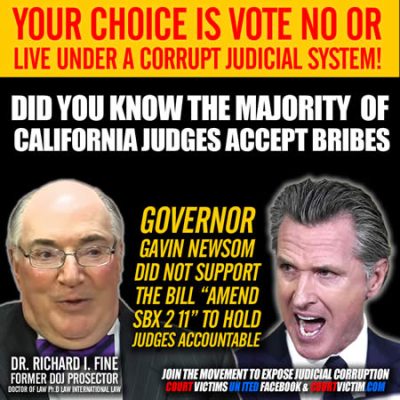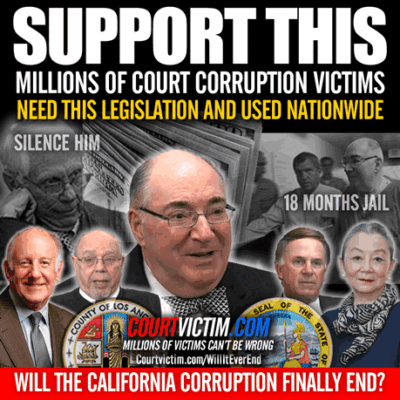September 6 2023 A Day of Infamy for Justice in America

A bold headline! What does it mean? September 6, 2023, is the last day that the California Legislature can amend pending California Assembly Judicial Committee Bill AB 1756, “Omnibus Judicial Legislation” to end thirty-seven (37) years of judicial corruption depriving California citizens and residents due process and an honest judicial system. The judiciary illegally accepted approximately $1-1.1 billion from California counties and courts, in violation of the California Penal Code’s “bribe” and related sections, and the federal criminal law 18 U.S.C. Section 1346 – “The Intangible Right to Honest Services” under which “Bribery” is an element to prove. The California Legislature has refused to stop the corruption for thirty-seven (37) years: (1) since 1985 when the “illegal payments” began; (2) 2000 when Richard I. Fine “discovered” the hidden illegal payments and exposed them in court documents; (3) 2008 when the California Court of Appeal held the payments violated the California Constitution; (4) immediately followed by 2009 when the California Judicial Council, the courts and the judges prevailed upon Darryl Steinberg, President pro Tempore of the California State Senate to falsely claim an Emergency Session of the State Legislature and pass SBX 2 11 in seven (7) days to reinstate the illegal payments on an “interim basis” and give the California Superior Court judges who accepted illegal payments and the counties and courts and employees who made the illegal payments, “retroactive immunity from California Criminal Prosecution, Civil Liability and Discipline” which Governor Schwarzenegger immediately signed; (5) 2010 when the California Court of Appeal ruled it was only the Legislature who could stop the illegal payments; and (6) 2015 when the California Court of Appeal again stated it was only the Legislature who could stop the illegal payments. Commencing in 2020-2021, Richard… Read More




